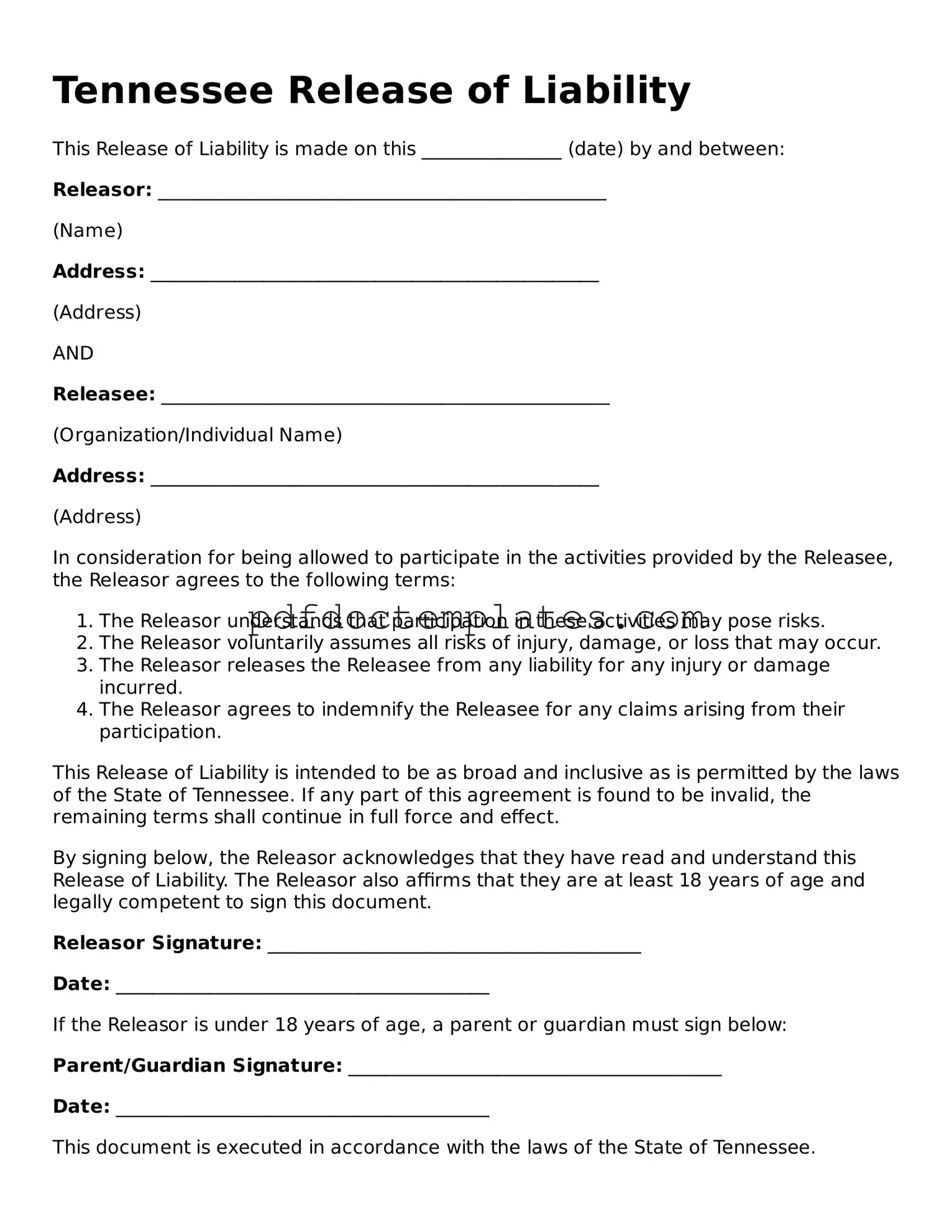Tennessee Release of Liability
This Release of Liability is made on this _______________ (date) by and between:
Releasor: ________________________________________________
(Name)
Address: ________________________________________________
(Address)
AND
Releasee: ________________________________________________
(Organization/Individual Name)
Address: ________________________________________________
(Address)
In consideration for being allowed to participate in the activities provided by the Releasee, the Releasor agrees to the following terms:
- The Releasor understands that participation in these activities may pose risks.
- The Releasor voluntarily assumes all risks of injury, damage, or loss that may occur.
- The Releasor releases the Releasee from any liability for any injury or damage incurred.
- The Releasor agrees to indemnify the Releasee for any claims arising from their participation.
This Release of Liability is intended to be as broad and inclusive as is permitted by the laws of the State of Tennessee. If any part of this agreement is found to be invalid, the remaining terms shall continue in full force and effect.
By signing below, the Releasor acknowledges that they have read and understand this Release of Liability. The Releasor also affirms that they are at least 18 years of age and legally competent to sign this document.
Releasor Signature: ________________________________________
Date: ________________________________________
If the Releasor is under 18 years of age, a parent or guardian must sign below:
Parent/Guardian Signature: ________________________________________
Date: ________________________________________
This document is executed in accordance with the laws of the State of Tennessee.
